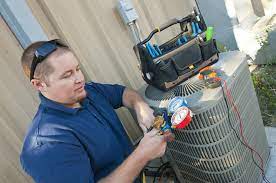Jönköping, a radiant city in southern Sweden noted for their progressive stance on sustainability and standard of living, is taking significant advances towards implementing sustainable ventilation options across their public segment buildings. As urban populations develop and environmental problems improve, Jönköping is showing management in establishing advanced ventilation technologies that improve interior air quality (IAQ), minimize power usage, and promote a greener urban environment. This informative article examines how Ventilation Växjö responsibility to sustainability is reshaping community sector houses through modern ventilation solutions.
The Critical for Sustainable Ventilation
In the context of urban growth, the quality of indoor settings in public field buildings plays an essential position in the well-being and output of occupants. Bad IAQ can lead to health concerns and vexation among workers and visitors, impacting over all functional performance and public satisfaction. Realizing these problems, Jönköping has prioritized the implementation of sustainable ventilation alternatives as part of its broader sustainability agenda.
Technical Improvements in Ventilation
Jönköping sees cutting-edge ventilation systems to improve IAQ and power performance in public places field buildings. Advanced ventilation methods built with intelligent devices and IoT (Internet of Things) abilities check indoor air variables such as for example CO2 levels, humidity, and temperature in real-time. These systems change ventilation charges dynamically predicated on occupancy and environmental problems, ensuring maximum interior comfort while reducing energy consumption. By leveraging technology, Jönköping enhances functional performance and sustainability across its public market infrastructure.
Integration of Heat Recovery Ventilation (HRV)
Main to Jönköping’s sustainable ventilation technique may be the integration of temperature healing ventilation (HRV) methods in public segment buildings. HRV programs retrieve temperature from fatigue air and move it to inward outdoors, lowering the requirement for extra heating or cooling energy. That not just reduces electricity fees but in addition reduces carbon emissions related to building operations. By maximizing power effectiveness and thermal ease, HRV programs contribute to Jönköping’s aim of achieving environmental sustainability while enhancing interior comfort for creating occupants.
Sustainable Creating Practices and Certifications
Jönköping promotes sustainable creating techniques and certifications that prioritize IAQ and ventilation efficiency in public places field developments. The city encourages adherence to certifications such as BREEAM (Building Study Establishment Environmental Evaluation Method) and LEED (Leadership in Power and Environmental Design), which stress high-performance ventilation techniques and overall environmental sustainability. By placing stringent requirements and adding them into developing requirements, Jönköping guarantees that public segment houses match demanding requirements for IAQ and energy effectiveness, thus promoting long-term sustainability.
Collaborative Governance and Plan Initiatives
Powerful implementation of sustainable ventilation options needs collaborative governance and supportive plan frameworks. Jönköping collaborates with local authorities, community agencies, and industry stakeholders to develop and enforce rules that promote energy-efficient ventilation practices. By aiming guidelines with environmental goals and fostering unions, Jönköping creates an allowing atmosphere for development and constant development in sustainable urban infrastructure.
Community Attention and Involvement
Participating stakeholders and raising attention about the benefits of sustainable ventilation solutions is important to Jönköping’s approach. The city conducts outreach programs, workshops, and educational campaigns to train developing managers, employees, and people about IAQ, energy savings, and environmental impacts. By empowering stakeholders with knowledge and assets, Jönköping encourages productive participation in sustaining and increasing indoor quality of air, fostering a healthy and more sustainable developed environment.
Economic and Environmental Advantages
Purchasing sustainable ventilation alternatives offers significant economic and environmental advantages for Jönköping. Improved IAQ reduces healthcare costs related to respiratory illnesses and improves productivity among community market employees. Energy-efficient ventilation methods lower power costs for making homeowners, causing price savings and financial resilience. Moreover, by lowering greenhouse gasoline emissions and marketing resource efficiency, Jönköping promotes their popularity as a sustainable city devoted to increasing quality of life for people and readers alike.
Conclusion
In summary, Jönköping’s commitment to sustainable ventilation alternatives in their community field buildings demonstrates its management in downtown sustainability and public health. By adopting technological breakthroughs, integrating HRV programs, promoting sustainable developing practices, and fostering collaborative governance and neighborhood diamond, Jönköping guarantees that public segment facilities are healthiest, more energy-efficient, and environmentally responsible. As cities world wide encounter the difficulties of urbanization and environment modify, Jönköping provides as a design for integrating environmental stewardship with technical development to create sturdy and livable downtown environments.
In Jönköping, the trip towards sustainable ventilation options in people sector is a testament to the city’s devotion to improving standard of living and keeping natural methods for future generations. Through hands-on measures and inclusive methods, Jönköping remains to cause by case in marketing sustainable downtown growth and making healthiest indoor situations for all.


